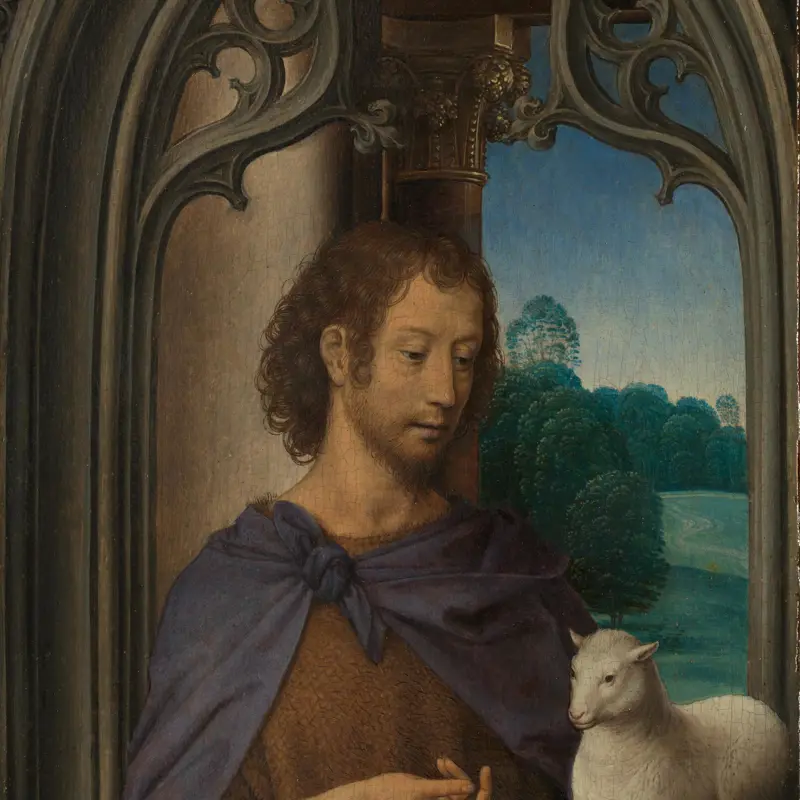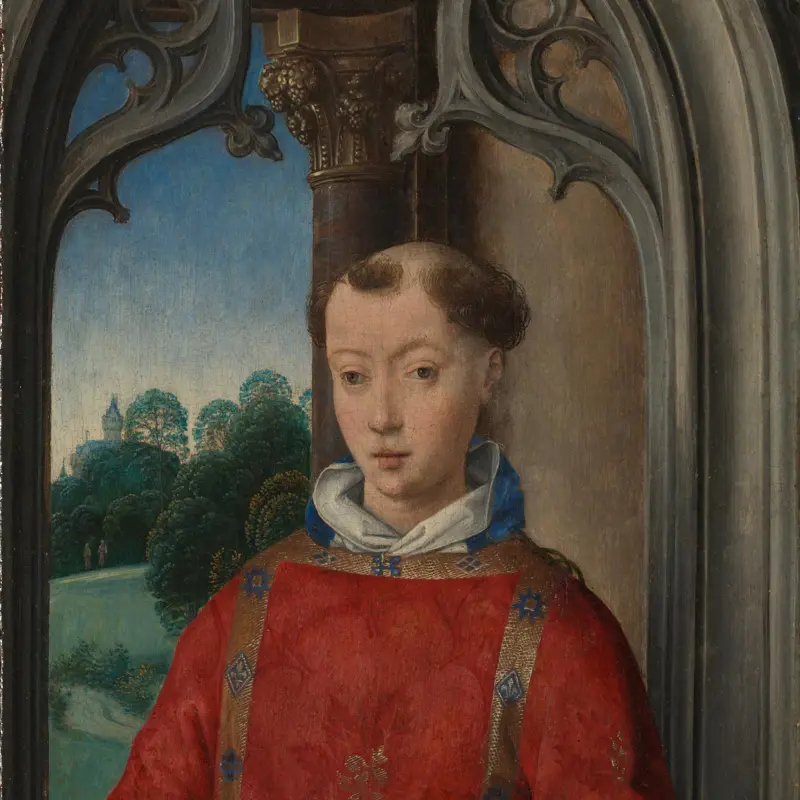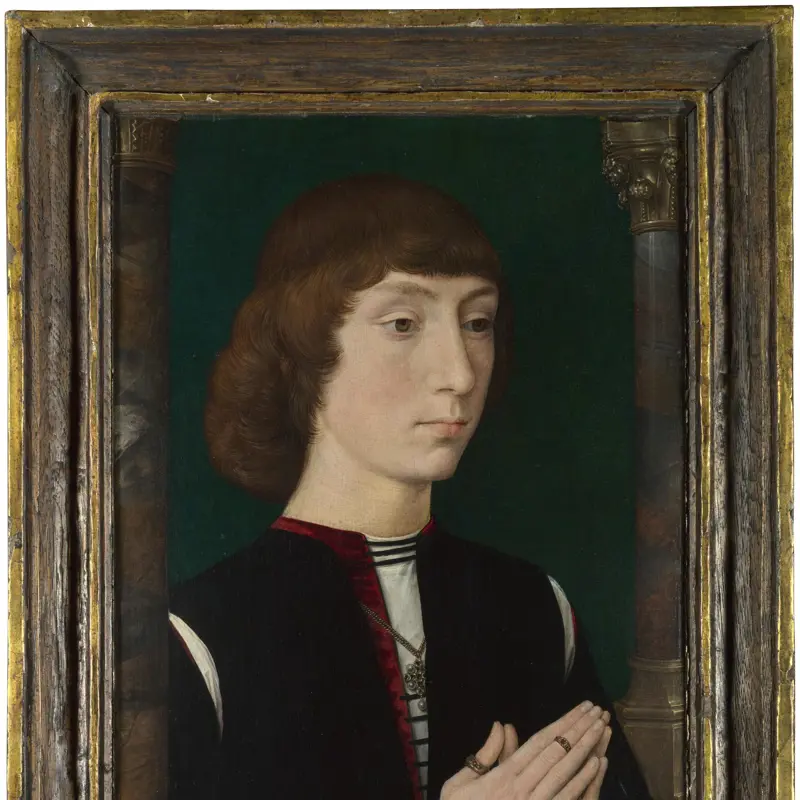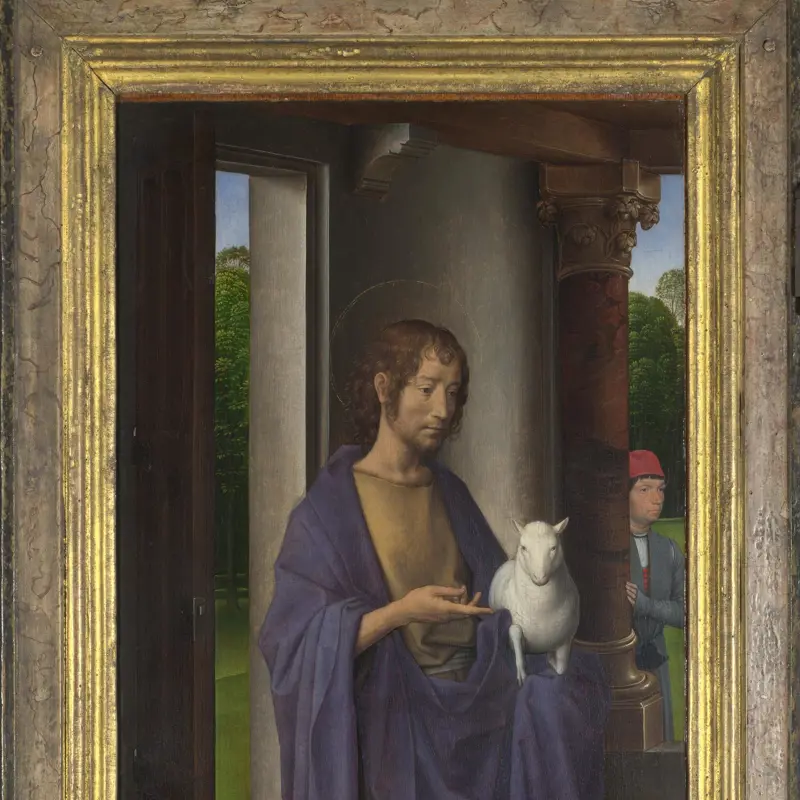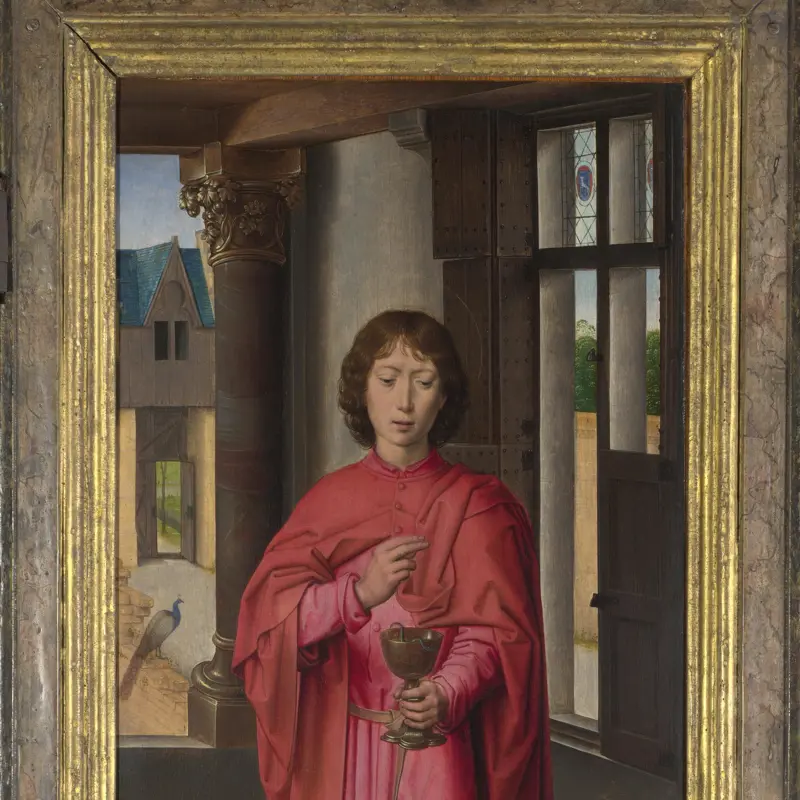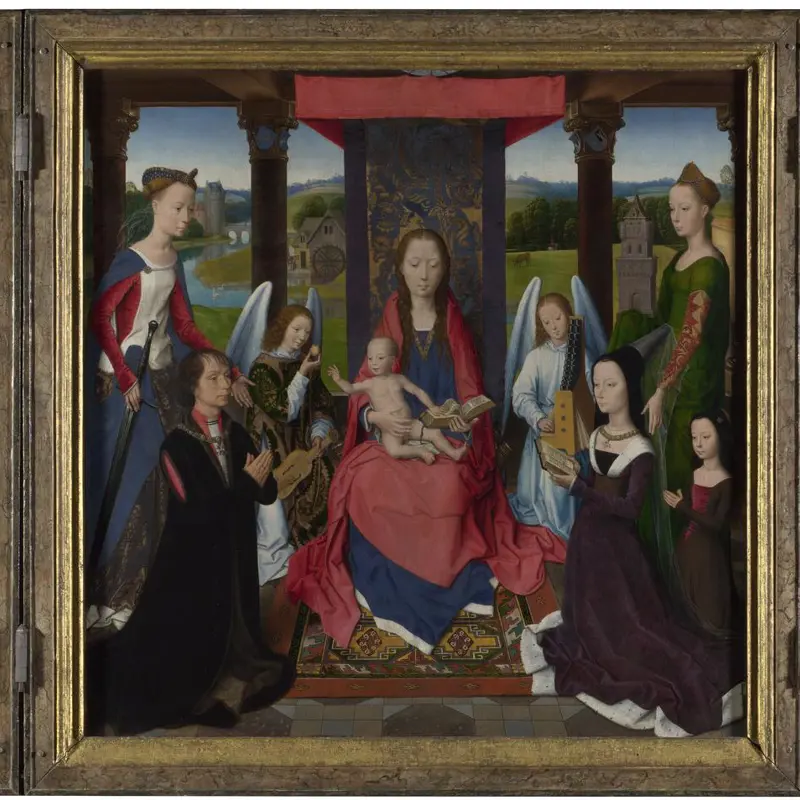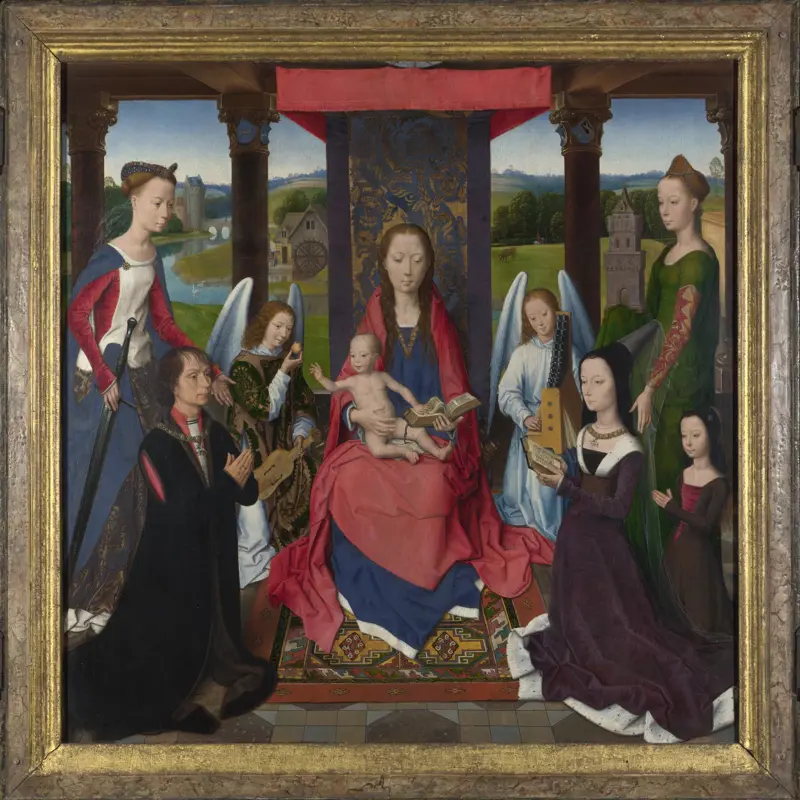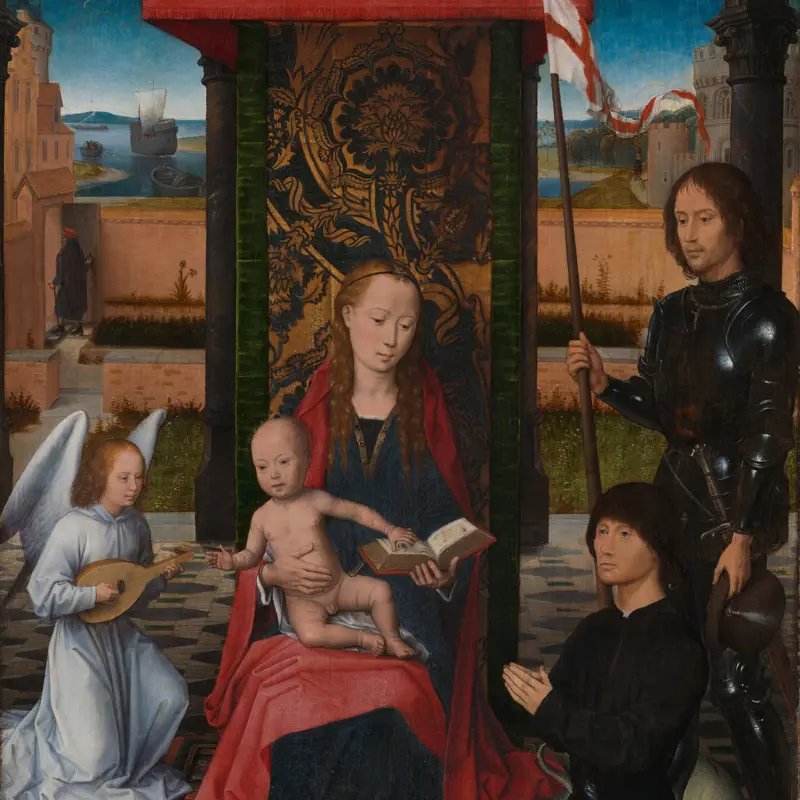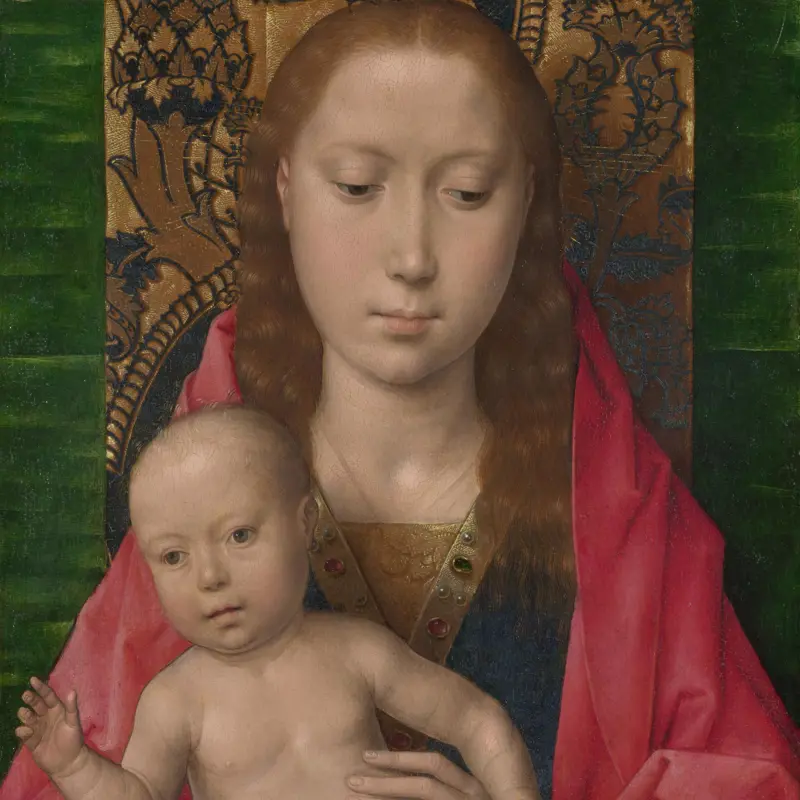Hans Memling, 'Saint Lawrence', about 1480
About the work
Overview
Saint Lawrence is dressed as a deacon and holds a book and the grill on which he was martyred. This panel was part of a small triptych (a painting in three parts) made around 1480 for Benedetto Pagagnotti of Florence. The central panel shows the Virgin and Child and is now in the Uffizi, Florence, while the left wing, which depicts Saint John the Baptist, is also in the National Gallery’s collection.
The other figures in this triptych appear in a number of altarpieces by Hans Memling, but there was no prototype for Saint Lawrence. Unlike John the Baptist, the underdrawing for this figure is slight and has very few changes. Memling must have produced a preliminary design especially for this figure, which would have been approved by the commissioner and which would then have been copied carefully onto the panel, avoiding the need for extensive underdrawing.
Key facts
Details
- Full title
- Saint Lawrence
- Artist
- Hans Memling
- Artist dates
- Active 1465, died 1494
- Part of the group
- Two Panels from a Triptych
- Date made
- About 1480
- Medium and support
- Oil on wood (probably oak)
- Dimensions
- 57.5 × 17.1 cm
- Acquisition credit
- Bought, 1865
- Inventory number
- NG747.2
- Location
- Room 60
- Collection
- Main Collection
- Frame
- 20th-century Replica Frame
Provenance
Additional information
Text extracted from the ‘Provenance’ section of the catalogue entry in Lorne Campbell, ‘National Gallery Catalogues: The Fifteenth Century Netherlandish Schools’, London 1998; for further information, see the full catalogue entry.
Exhibition history
-
2014Memling. Flemish renaissanceScuderie del Quirinale9 October 2014 - 18 January 2015
Bibliography
-
1945Davies, Martin, National Gallery Catalogues: Early Netherlandish School, London 1945
-
1955Davies, Martin, National Gallery Catalogues: Early Netherlandish School, 2nd edn (revised), London 1955
-
1987Davies, Martin, National Gallery Catalogues: The Early Netherlandish School, 3rd edn, London 1987
-
1998Campbell, Lorne, National Gallery Catalogues: The Fifteenth Century Netherlandish Paintings, London 1998
-
2001
C. Baker and T. Henry, The National Gallery: Complete Illustrated Catalogue, London 2001
Frame
This is an English twentieth-century reproduction frame, made in the Gothic style. The oak double-sided frame has Flemish-style moulding and is embellished with water-gilt craquelure on the inner slip frame. Usually shown in a free-standing display case with its pair, Memling’s Saint John the Baptist, the panel is held upright with metal brackets painted in a woodgrain finish, to preserve the aesthetic integrity of the artwork while accommodating its unique presentation requirements.
The two panels by Memling were previously displayed together in a single gilt frame of Gothic design, made in 1865 and protected with glass. This frame is visible in parts in a photo taken by Signor L. Caldesi for the National Gallery catalogue of 1872.
About this record
If you know more about this work or have spotted an error, please contact us. Please note that exhibition histories are listed from 2009 onwards. Bibliographies may not be complete; more comprehensive information is available in the National Gallery Library.
Images
About the group: Two Panels from a Triptych
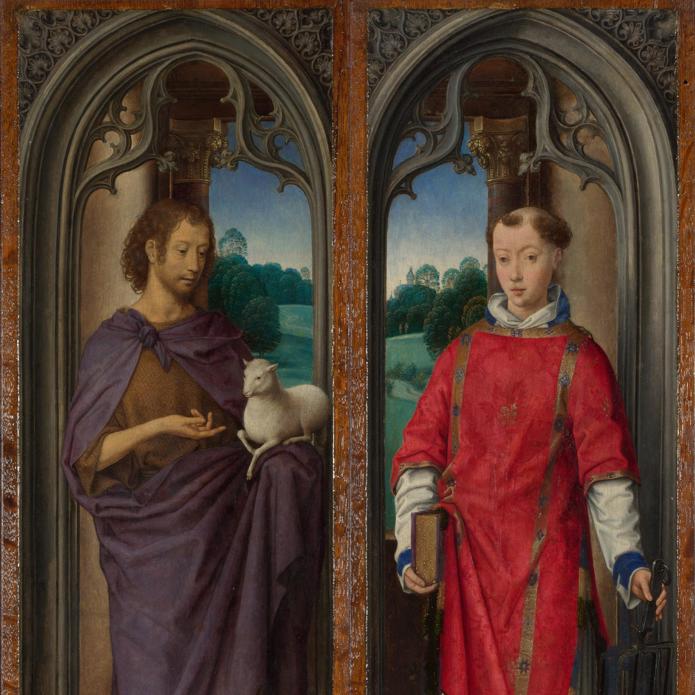
Overview
These panels were once the wings of a small triptych (a painting in three parts), the centre panel of which – The Virgin and Child with Two Angels – is now in the Uffizi, Florence. The altarpiece was demonstrably in Florence by the end of the fifteenth century, as its landscape backgrounds were frequently copied by Florentine artists of the time.
This composition, with the Virgin and Child enthroned and flanked by standing saints, was a popular product of Hans Memling’s workshop. The Virgin, Christ and angels in the Uffizi painting reappear in several other works by him, including The Donne Triptych (also in the National Gallery’s collection).
On the outside of the wings nine beautifully painted cranes stand in a dark landscape beneath the coat of arms and emblems of the Pagagnotti family. The triptych’s first owner was almost certainly the high-ranking bishop Benedetto Pagagnotti, who used the crane and compasses as his emblem.

